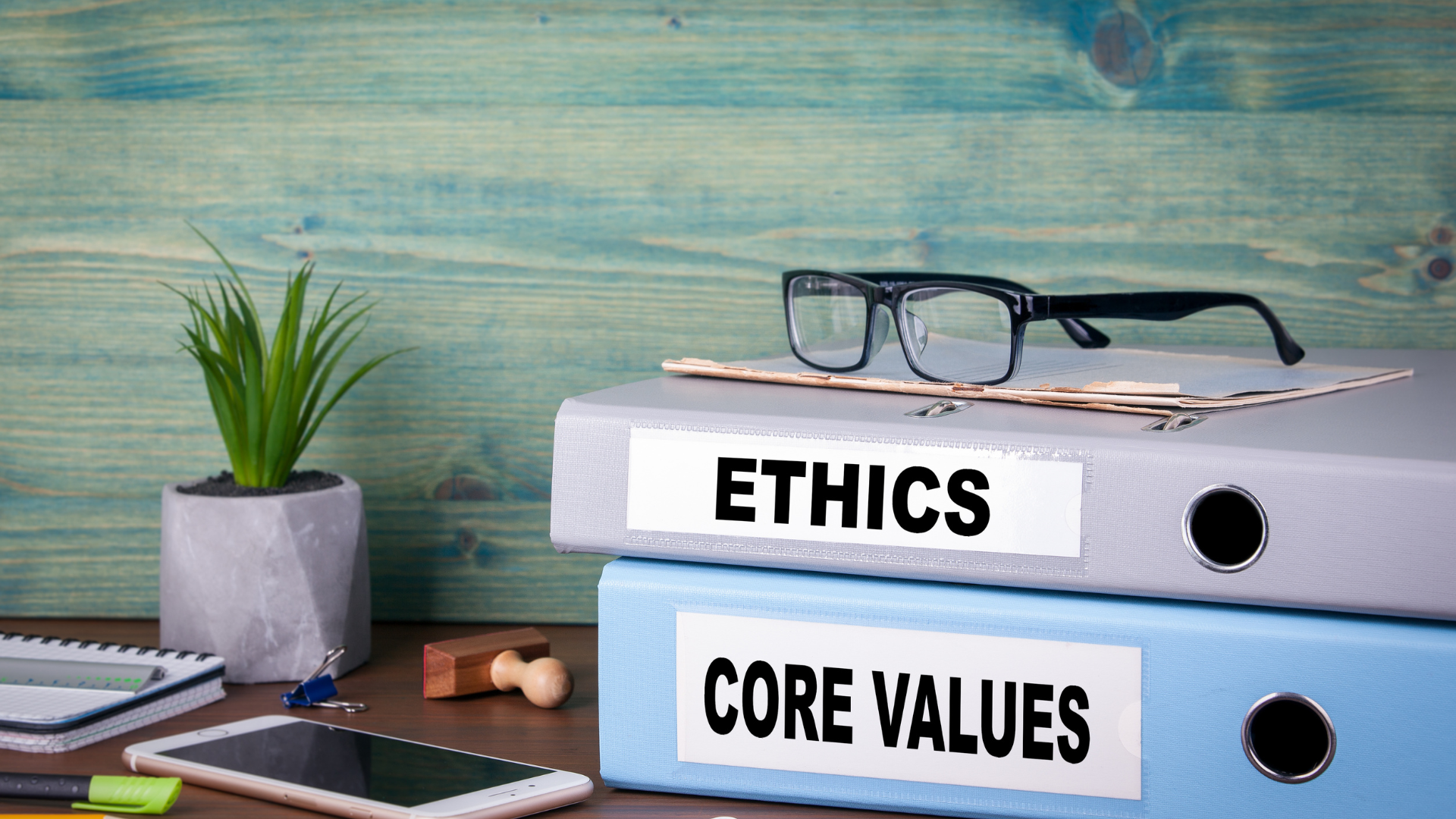Understanding the Process of Valuing Goodwill When Selling a Business
The Fundamentals of Goodwill in Business Valuation
Defining Goodwill in the Context of Business Sales
When selling a business, understanding the concept of goodwill is paramount. Goodwill represents the excess value of a business beyond its tangible assets and liabilities. It encompasses elements such as brand reputation, customer relationships, and proprietary technology. Business brokers in St. Louis and elsewhere often emphasize the importance of goodwill in determining a business's market value.
Goodwill is not just a nebulous concept; it has real financial implications. The following list outlines some key contributors to a business's goodwill:
- Strong brand recognition
- Loyal customer base
- Proprietary technology or processes
- Strategic business location
Goodwill is an intangible asset that reflects the value of a business's reputation and customer loyalty, among other factors. It is a critical element that can significantly influence the final sale price when selling a business.
Calculating the precise value of goodwill can be complex, but it is essential for both sellers and buyers to have a clear understanding of its impact on the business valuation.
The Distinction Between Personal and Business Goodwill
Goodwill is an intangible asset in business valuation, but it's essential to understand that not all goodwill is created equal. Personal goodwill is tied to an individual's reputation, skills, and relationships that benefit the business. In contrast, business goodwill (or enterprise goodwill) is inherent to the company itself, independent of any one individual's contributions.
- Personal goodwill is often associated with the business owner or key personnel whose departure could significantly impact the company's earnings and customer relationships.
- Business goodwill reflects the company's established reputation, customer base, proprietary technology, or other unique attributes that provide a competitive edge.
When valuing a business, distinguishing between personal and business goodwill is crucial because they have different implications for taxation and transferability during a sale.
The valuation of personal versus business goodwill can influence the overall price of a business and its attractiveness to potential buyers. Personal goodwill may not be transferable if the individual leaves, while business goodwill remains with the company post-sale. Understanding this distinction helps in structuring the sale to optimize tax outcomes and ensure a fair transaction.

Calculating Goodwill: Methods and Challenges
Calculating goodwill is an intricate process that hinges on the specifics of the business and the market context. The fundamental formula for goodwill calculation is Goodwill = P - (A - L), where P represents the purchase price, A is the fair market value of identifiable assets, and L is the fair market value of liabilities. However, applying this formula is not straightforward due to the subjective nature of certain inputs.
The valuation of goodwill is not an exact science, and often, the derived figure is not absolutely precise. This inherent uncertainty necessitates professional judgment and a deep understanding of the business's unique attributes.
The steps to guide the calculation of goodwill include:
- Identifying and valuing all identifiable assets and liabilities.
- Determining the fair market value of these items.
- Subtracting the fair market value of liabilities from the fair market value of assets to establish the net identifiable assets.
- Subtracting the net identifiable assets from the total purchase price to arrive at the goodwill amount.
Each step presents its own set of challenges, from the valuation of intangible assets to the assessment of contingent liabilities. The complexity of these tasks often requires the expertise of valuation professionals to ensure a credible and defensible valuation outcome.
Goodwill Valuation Techniques
Income Approach: Capitalizing Excess Earnings
The Income Approach, particularly the Capitalizing Excess Earnings method, is a cornerstone of business valuation. It hinges on the idea that a business's value can be determined by its ability to generate future profits. The formula used is: Value = Normalized Earnings / Capitalization Rate. This method is especially relevant for businesses with stable and predictable earnings.
The Capitalization of Earnings method simplifies the valuation process by normalizing a company's annual earnings and dividing by a capitalization rate, which reflects the required rate of return by investors.
To apply this method, one must:
- Calculate average historical earnings.
- Adjust earnings for one-time events and anomalies.
- Determine the capitalization rate based on market multiples of comparable businesses or industry averages.
- Divide the adjusted earnings by the capitalization rate to arrive at the business value.
The following table illustrates a simplified example of projecting cash flows and calculating their present value:
| Year | Projected Cash Flow | Discount Factor | Present Value |
|---|---|---|---|
| 1 | $100,000 | 0.909 | $90,900 |
This approach is particularly suited for mature companies with a history of consistent earnings, providing a steady-state scenario for valuation.
Market Approach: Comparables and Precedent Transactions
The market approach to valuing goodwill relies on the analysis of prices and financial metrics from similar businesses within the same industry. This method is particularly effective in sectors with a high volume of public data, such as technology and consumer businesses. The core of this approach is the comparison of trading multiples, such as price-to-earnings and price-to-sales ratios, to derive a fair value for goodwill.
When implementing the market approach, the following steps are typically taken:
- Identify past transactions within the same sector.
- Gather data on sale price and financials at the time of the deal.
- Adjust for inflation, market changes, and any anomalies.
This technique often yields a higher valuation than comparable company analysis due to the control premium paid in acquisitions. However, it's crucial to consider the nuances of each transaction to ensure an accurate comparison.
The market approach provides a real-world context for goodwill valuation, reflecting the premium that buyers are willing to pay for intangible assets in actual transactions.
Asset Approach: Adjusted Net Asset Method
The Adjusted Net Asset Method fine-tunes the basic asset approach by revising the book values of assets and liabilities to reflect current market conditions. This method provides a more realistic and often higher valuation of a business's net assets. It's particularly useful for companies with significant tangible assets or those undergoing restructuring.
The process involves a meticulous examination of each asset and liability, ensuring that the values are adjusted for factors such as depreciation, market demand, and potential obsolescence.
To apply this method effectively, consider the following steps:
- Identify all the business's assets and liabilities.
- Adjust the book values to mirror fair market values.
- Account for any depreciation or obsolescence.
- Subtract the adjusted liabilities from the adjusted assets to determine the adjusted net asset value.
The table below illustrates a simplified example of how assets and liabilities might be adjusted:
| Asset/Liability | Book Value | Adjusted Value |
|---|---|---|
| Real Estate | $500,000 | $650,000 |
| Equipment | $200,000 | $150,000 |
| Inventory | $100,000 | $120,000 |
| Accounts Payable | $50,000 | $50,000 |
In this example, the adjusted net asset value would be calculated by summing the adjusted values of the assets and then subtracting the adjusted liabilities.
The Role of Goodwill in Mergers and Acquisitions
Strategic Importance of Goodwill in M&A
In the realm of mergers and acquisitions, goodwill embodies the premium paid for intangible assets that are not directly reflected on the balance sheet. These intangibles, such as brand reputation, customer relationships, and intellectual property, often dictate the strategic value of a business beyond its physical assets.
Goodwill is not just an accounting entry; it is a tangible representation of a business's competitive edge and future profit potential.
The strategic importance of goodwill in M&A can be summarized through several key points:
- It represents the excess value that an acquiring company is willing to pay for a target company, over and above the fair market value of its tangible assets.
- Goodwill is indicative of the target company's potential to generate future earnings and sustain a competitive position in the market.
- Proper valuation and management of goodwill can significantly influence the success of the merger or acquisition, impacting shareholder value.
Understanding and accurately valuing goodwill is crucial for both buyers and sellers, as it can affect negotiation strategies, purchase price allocation, and post-acquisition integration plans.
Assessing and Measuring Goodwill Impairment
Assessing and measuring goodwill impairment is a critical aspect of maintaining the accuracy of a company's financial statements. Goodwill impairment testing is an annual process that involves a comparison between the carrying value of goodwill and its implied fair value. If the carrying value exceeds the fair value, an impairment loss must be recognized.
This process is not only a compliance requirement but also a strategic review of the intangible asset's ongoing viability and contribution to the company's value.
The impairment loss directly affects the company's balance sheet by reducing the total assets and can lead to a decrease in net income. The steps involved in goodwill impairment testing include:
- Identifying reporting units
- Determining the carrying amount of each reporting unit
- Calculating the fair value of each reporting unit
- Comparing the carrying amount to the fair value
- Recognizing an impairment loss if the carrying amount exceeds the fair value
The complexity of this task necessitates the involvement of valuation and accounting experts to ensure that the assessment accurately reflects the business's market position and future earning potential.
Goodwill Write-offs and Their Impact on Financial Statements
Goodwill write-offs occur when the carrying value of goodwill on a company's balance sheet exceeds its recoverable amount, indicating that the goodwill is impaired. This situation necessitates a reduction in the asset's value, which is recognized as an expense in the income statement. The immediate effect is a decrease in net income and a corresponding reduction in shareholders' equity.
The implications of goodwill impairment extend beyond the immediate financial period. It can signal to investors and analysts that past acquisitions have not yielded the expected benefits, potentially affecting the company's market valuation and investor confidence. Moreover, a significant write-off could breach debt covenants, leading to higher borrowing costs or credit downgrades.
Goodwill impairment is a critical indicator of a company's financial health and future earnings potential. It requires careful scrutiny to understand its impact on long-term value creation.
The following table illustrates the typical effects of a goodwill write-off on key financial statement items:
| Financial Statement Item | Effect of Goodwill Write-off |
|---|---|
| Net Income | Decrease |
| Total Assets | Decrease |
| Shareholders' Equity | Decrease |
| Earnings Per Share (EPS) | Decrease |
It is essential for companies to manage their goodwill effectively and conduct regular impairment tests to avoid surprises that could destabilize their financial standing.
Accounting for Goodwill Post-Transaction
Goodwill on the Balance Sheet: Recognition and Measurement
Goodwill represents the excess of the purchase price over the fair value of the identifiable net assets of an acquired company. It is recognized as a non-current asset on the balance sheet of the acquiring company. The measurement of goodwill is a critical step in financial reporting and requires careful assessment of the target company's intangible assets.
Goodwill is subject to annual impairment testing to ensure that its reported value does not exceed the recoverable amount. If an impairment is identified, it necessitates a reduction in the carrying value of goodwill, which is reflected in the financial statements.
- Goodwill measurement: Subtract fair value of identifiable assets and liabilities from purchase price.
- Recognition on balance sheet: Recorded as a non-current asset.
- Impairment testing: Conducted annually to assess if the carrying amount exceeds recoverable amount.
The accurate valuation and reporting of goodwill are essential for transparent financial statements and can significantly influence stakeholders' perceptions of a company's value and performance.
Annual Impairment Testing and Its Significance
Goodwill impairment testing is a critical annual exercise that ensures the value of goodwill on the balance sheet reflects its current fair value. If the carrying value of goodwill is higher than its fair value, an impairment loss must be recognized. This adjustment is not just an accounting formality; it has real implications for a company's financial health.
Impairment losses directly affect a company's total assets and net income, potentially leading to a decline in stock price and investor confidence.
The process involves several steps, including:
- Identification of reporting units
- Determination of the carrying amount of goodwill
- Calculation of the fair value of reporting units
- Comparison of fair value to carrying amount
If impairment is detected, it necessitates a reduction in the recorded value of goodwill, which in turn decreases total assets and may result in a lower net income for the fiscal period. This can have a domino effect, potentially triggering breaches of debt covenants and impacting borrowing costs and credit ratings.
The Effect of Goodwill on Company Valuation and Performance
Goodwill significantly influences a company's valuation and performance, reflecting the intangible assets that contribute to its competitive advantage. The presence of strong goodwill often correlates with enhanced brand value, signaling a robust reputation and solid customer relationships.
Factors that affect the value of goodwill include:
- Market conditions
- Brand reputation
- Customer loyalty
- Intellectual property
- Employee relations
Goodwill represents more than just an accounting entry; it embodies the essence of a company's market position and the potential for future earnings. A high goodwill value can elevate a company's overall worth, while a decline due to impairment can adversely affect financial statements and investor perceptions.
However, the risks associated with goodwill cannot be overlooked. Damage to a company's reputation or customer base can lead to a decrease in goodwill value, impacting not only the balance sheet but also the company's market standing and potential for growth.
Expert Insights on Goodwill Valuation
The Necessity of Professional Appraisals in Goodwill Valuation
Valuing goodwill is a nuanced process that often necessitates the expertise of professional appraisers. Certified appraisers bring an objective perspective to the valuation, ensuring that the goodwill's worth is assessed based on fair market principles and is widely accepted by regulatory bodies such as tax authorities.
Professional appraisals are particularly crucial when dealing with intangible assets that do not have a clear market value, such as brand reputation, customer relationships, and proprietary technology. The complexity of these assets makes it difficult for business owners to estimate their value without specialized knowledge.
The accuracy of a goodwill valuation can significantly affect the financial outcomes of a business sale or merger. An overvaluation or undervaluation can lead to tax complications, disputes, or even litigation.
Here are some common scenarios where professional appraisals are indispensable:
- Determining the value of personal goodwill for favorable tax treatment during a business sale.
- Assessing the fair market value of unique assets like antiques, art, or jewelry.
- Providing an unbiased valuation for closely-held businesses, which may be required by tax authorities.
Challenges in Estimating the True Value of Goodwill
Estimating the true value of goodwill is fraught with challenges, primarily due to its intangible nature. Goodwill valuation is not an exact science, and it can vary significantly depending on the evaluator's judgment and the chosen valuation method.
- The complexity of isolating goodwill from other intangible assets.
- The subjectivity involved in predicting future benefits.
- The variability in choosing appropriate discount rates.
- The difficulty in identifying and quantifying synergies post-acquisition.
Goodwill valuation requires a deep understanding of both the business in question and the market it operates in. The process is further complicated by the need to forecast future earnings and the potential for synergistic gains, which are inherently uncertain.
Given these complexities, it is crucial to engage with valuation and accounting experts who can navigate the intricacies of goodwill assessment. Their expertise is invaluable in ensuring that the goodwill recorded on the balance sheet reflects a fair and reasonable estimate of its value.
Best Practices for Maintaining and Enhancing Goodwill Value
Maintaining and enhancing goodwill is a continuous process that requires strategic planning and consistent effort. Building a strong brand and reputation is at the core of this process, as they are critical components of goodwill. Companies should focus on delivering exceptional customer service, fostering employee satisfaction, and upholding social responsibility to cultivate a loyal customer base and a positive public image.
- Deliver exceptional customer service to ensure customer satisfaction.
- Invest in building a strong brand that resonates with consumers.
- Emphasize social responsibility to build trust and goodwill among stakeholders.
- Engage with customers and the community to strengthen relationships.
- Monitor and manage online reputation to address any negative perceptions promptly.
By investing in these areas, businesses can protect and potentially increase the value of their goodwill, which in turn can enhance their overall market valuation. It's important to recognize that goodwill is not just an accounting entry, but a reflection of a company's intangible assets and its relationship with its customers, employees, and the broader community.
Frequently Asked Questions
-
What is the difference between personal goodwill and business goodwill?
Personal goodwill is associated with the individual characteristics and relationships of the business owner, while business goodwill relates to the inherent value of the business itself, such as its brand reputation, customer base, and market position.
-
How is goodwill calculated when valuing a business?
Goodwill is calculated by subtracting the combined value of tangible and intangible assets from the total value of the business. For instance, if the assets are worth $3 million and the business is valued at $6 million, the goodwill would be $3 million.
-
Why is it challenging to estimate the accurate value of goodwill?
Estimating the accurate value of goodwill is challenging because it is an intangible asset, making it difficult to quantify. Factors such as market position and customer base can be subjective and not always accurately reflected in financial terms.
-
What is the significance of goodwill in mergers and acquisitions?
Goodwill represents the synergistic value that an acquiring company expects from a merger or acquisition. It reflects the future growth potential, customer loyalty, and brand strength that are not captured in the physical assets of the business.
-
How should companies handle goodwill impairment?
Companies should evaluate goodwill for impairment annually. If the market value of the business drops below its book value, an impairment loss should be recognized and the goodwill value written off, which can affect the company's earnings.
-
What role do professional appraisals play in goodwill valuation?
Professional appraisals are essential in goodwill valuation as they provide an expert assessment of the intangible asset's value, taking into account various factors and ensuring a more accurate and reliable valuation for decision-making purposes.
Recent articles for you
First Choice Business Brokers St Louis Metro
Navigation Links
Want to receive new business listing alerts by email?
The World's Authority in Business Sales
© 2024 First Choice Business Brokers St Louis Metro | Each office is independently owned and operated. | Privacy Policy






